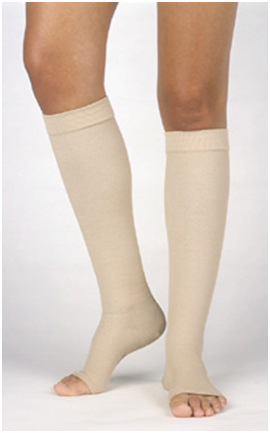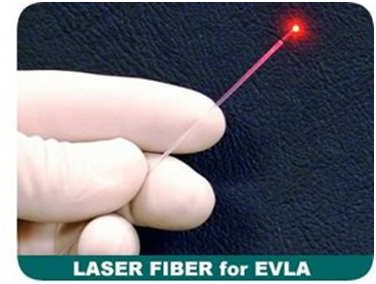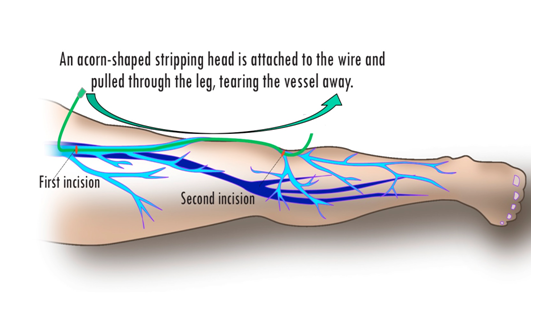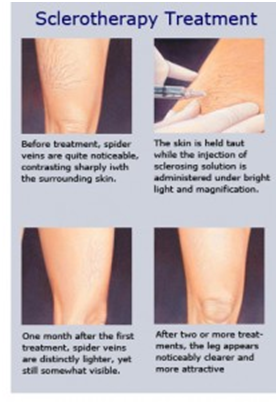- 020 3384 8444
- info@vascular-clinic.com
What is the best way to treat my veins?
In a nutshell, small surface veins can be treated by foam injection (sclerotherapy), but significant reflux of the main surface veins (saphenous veins) is best treated by minimally invasive or ‘keyhole’ techniques, also known as ‘endovenous ablation’, which can be performed under local anaesthetic, while you are awake.
Some surface veins cannot be treated in this way, because of their shape (excessive tortuosity) and still require the traditional ‘open’ operative approach, of surgically tying off and removing the saphenous veins under a general anaesthetic. People with many large visible veins under the surface of the skin may also benefit from having them removed (avulsion) and this may also require a general anaesthetic. All these procedures are performed on a day surgical basis, and you will be able to come in to our facility, have your ‘bespoke’ procedure, and return home safely on the same day.
There are several ‘endovenous ablation’ technologies that have proven results, the principle ones being laser and radiofrequency energy delivery devices. Both heat the vein from the inside, causing it to close, and thus stopping the backward flow and high pressure that cause the problems of varicose veins. Once you have had your initial consultation, with a comprehensive assessment and diagnosis, our vascular specialists will discuss the treatment options that are best for you. In this way we will be able to tailor your treatment, using the best combination of the latest technological innovations and our applied surgical expertise.
Compression

For those who do not wish to undergo surgical treatment, we can provide precisely fitted and tailor-made graduated compression hosiery, utilizing modern textile engineering, which are designed to replace the function of the non-functioning valves, and support the venous circulation, controlling the symptoms and progression of venous disease. It should be borne in mind that these need to be worn life-long, in every waking and upright hour, winter and summer, in order to be effective. Whilst many patients achieve adequate relief from our compression stockings, other people find even the best fitted stockings intolerable.
Foam
Small surface veins, and some thread veins in the skin can be treated by injection of a small quantity of a medical preparation of an ‘anionic surfactant’ (essentially a ‘soap’ like agent) called sodium tetradecyl sulfate (STS). STS is mixed with air to form micro-bubbles before injection, giving it a large surface area, and meaning more of your veins can be treated with less of the ‘sclerosing agent’, which is then carefully injected into the target vein by your surgeon under ultrasound guidance.
The SDS foam works, like soap, by dissolving some of the fat in the cells lining the vein, which leads to them becoming irritated. Thrombus (‘blood clot’) then forms within the targeted vein, and as this resolves the vein hardens and closes. Foam is not suitable for large veins, and even small veins may need several courses of treatment to obtain a satisfactory result. The veins can feel hard initially after treatment, and some – particularly those with very pale skin – may find that they are left with skin marking after the procedure.
Endovenoustreatment- Laser and Radiofrequency ablation

If your veins can be treated by this minimally invasive technique, then after preparing the leg in a sterile manner, your surgeon will use ultrasound to identify the main surface veins that need treatment. A little local anaesthetic is injected at the point of entry to the vein, and a needle is used to insert the treatment catheter into the vein. Once this treatment device is properly positioned, a dilute local anesthetic solution is injected around the target vein using ultrasound. This ‘tumescent anaesthesia’ makes the heat treatment process itself painless, but involves a series of small injections along the vein before the heating begins. Most people tolerate this procedure well without a general anaesthetic, but if you need to have a large number of vein avulsions in addition, you may be best served by having it performed under general anaesthetic.
‘Open’ surgery
The traditional ‘open’ operation to remove varicose veins is performed under a general anaesthetic, and involves making a small cut in the groin, to disconnect the faulty surface (great saphenous) vein from the deep veins. An instrument is passed down the vein to the knee, where another small cut is made, and the ‘stripper’ is used to pull this faulty vein out of the leg. A similar procedure can be performed to disconnect the other main (short saphenous) vein at the back of the leg, although this is not usually ‘stripped’.


All these procedures should only be performed after proper and comprehensive examination, Doppler, and ultrasound assessment to ensure that the deep veins are working normally, and ensure that the faulty veins are being fully and appropriately treated.
Micro-sclerotherapy
Micro-sclerotherapy involves the injection of chemicals directly into the small visable veins in the skin. These chemicals cause irritation of the lining of the veins resulting in damage. The sclerosed veins will fade over time.
